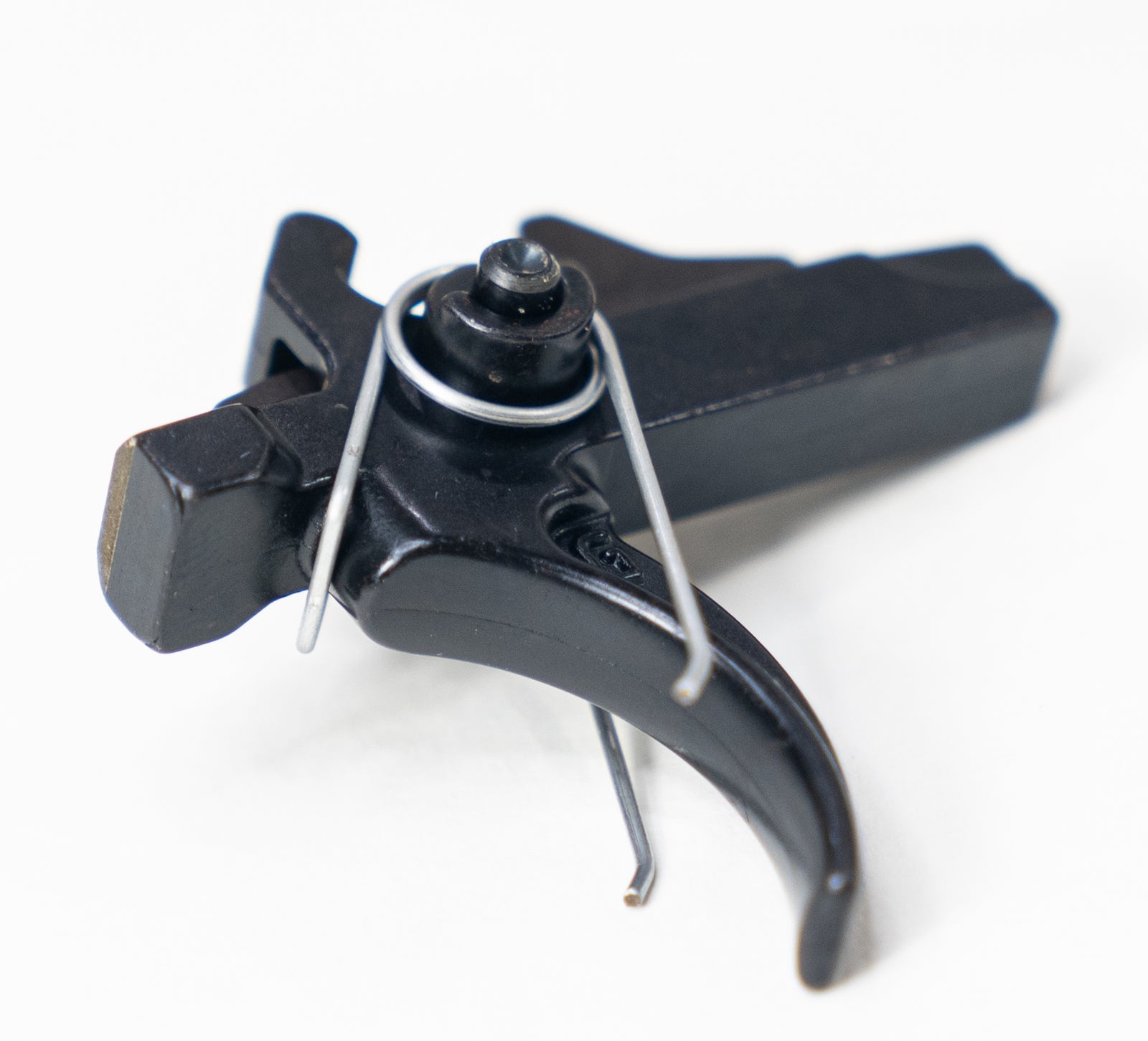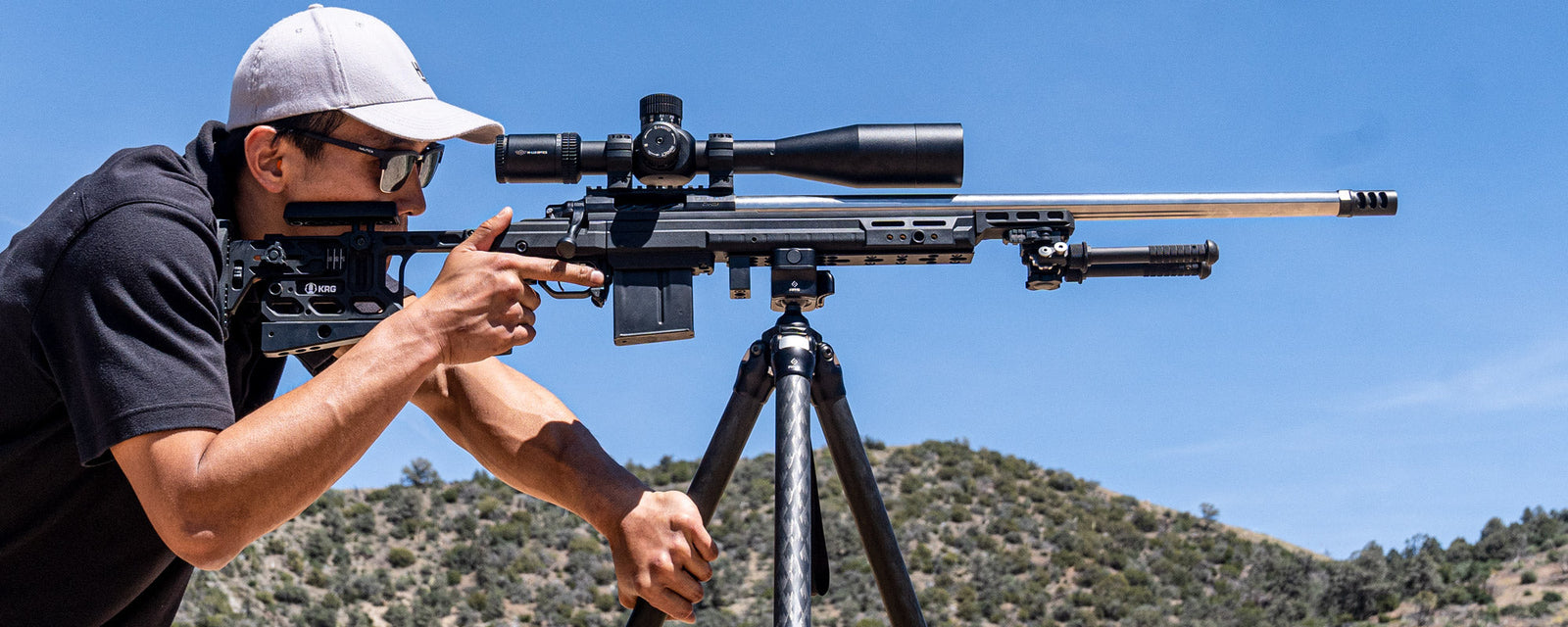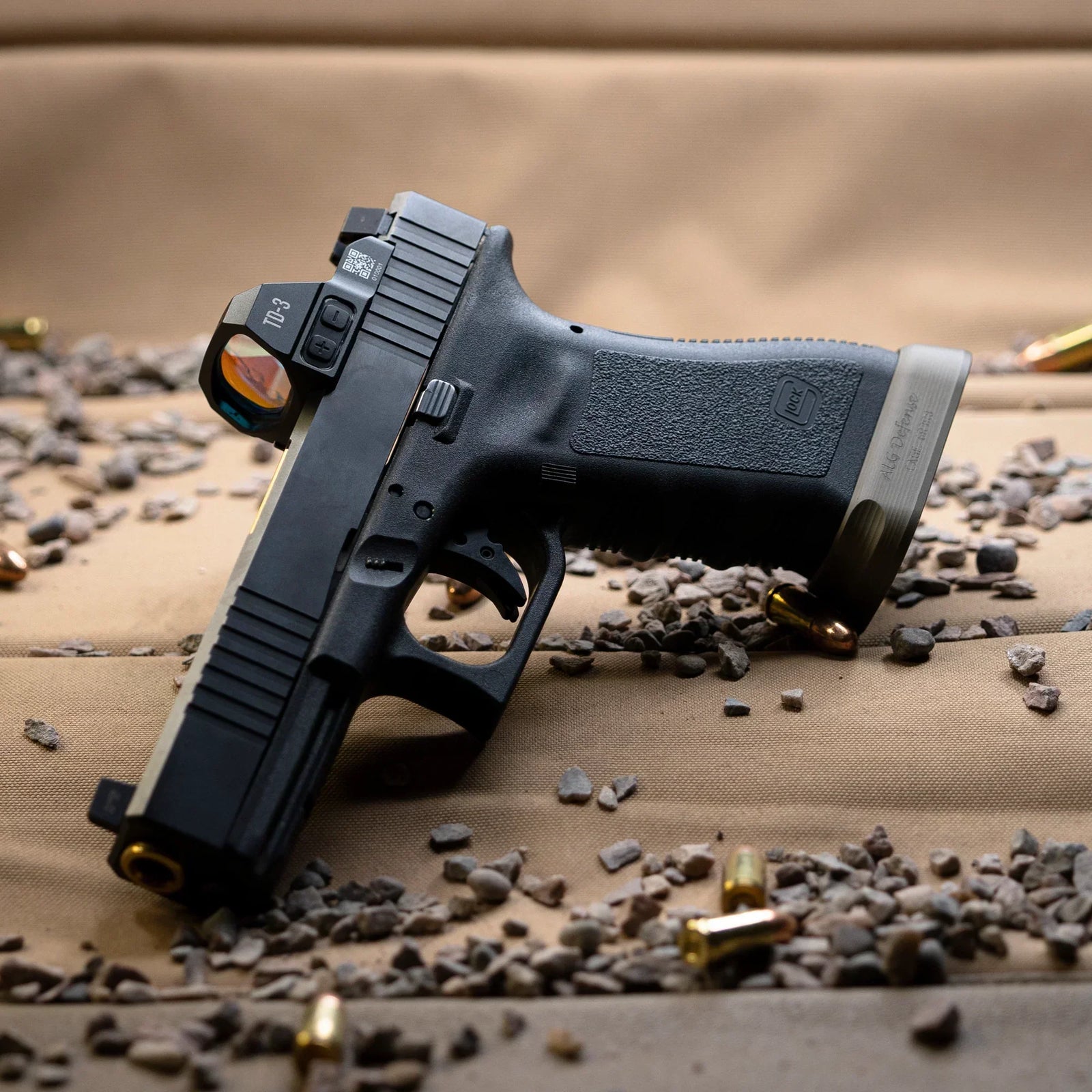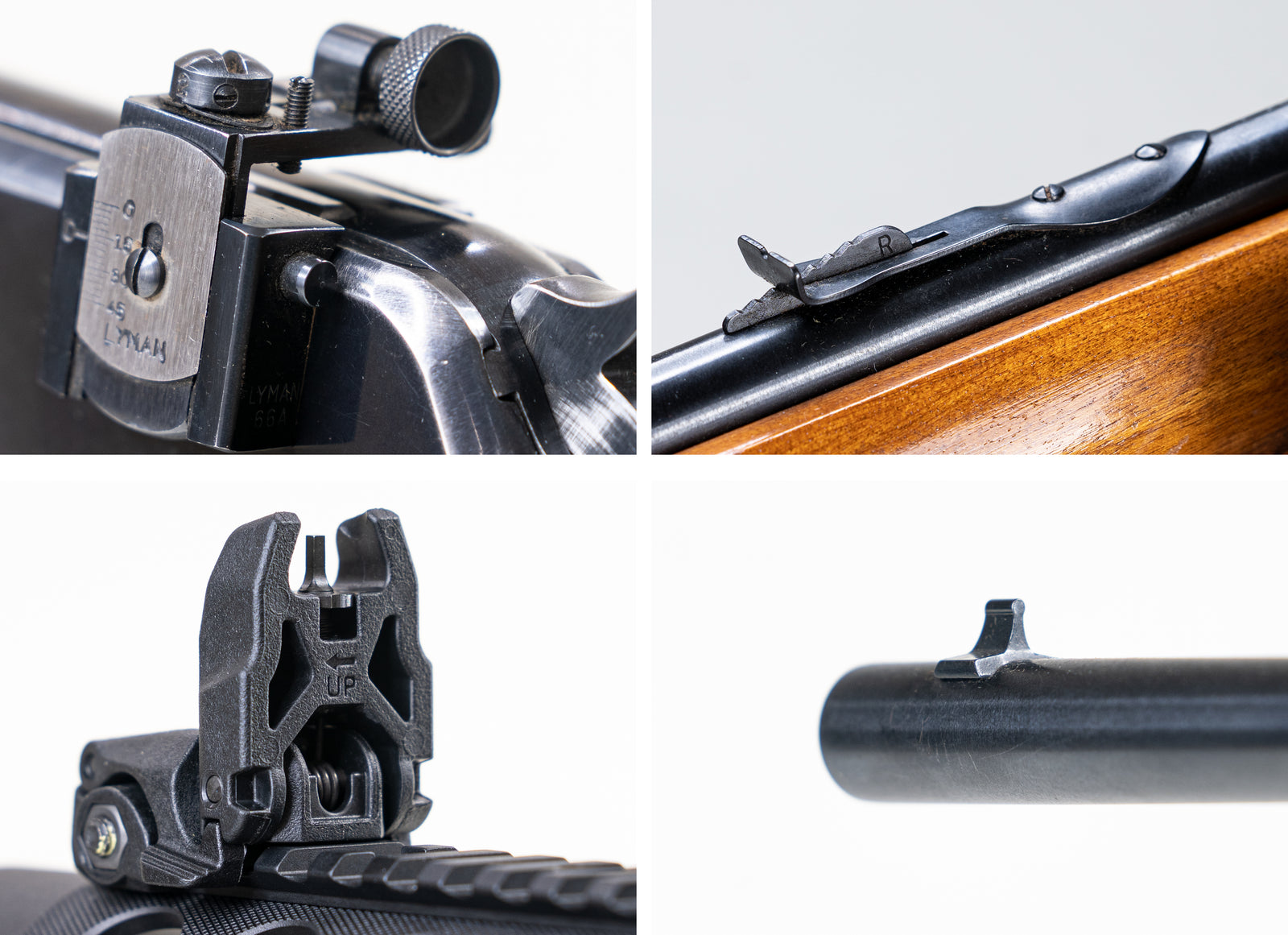The trigger is a small and highly crucial component of your rifle. You can’t reliably set off a round without some mechanism by which to do it!
What is Trigger Weight?
A trigger takes a certain amount of pressure to set off - the trigger weight. Higher trigger weight (measured in ounces or pounds) means a trigger will take more pressure to pull back until it sets off the round. In some triggers, this specific weight can be tuned. A hair trigger is one that takes a relatively light weight to pull back, but may be pulled back accidentally if you have a twitchy finger. Hair triggers are usually measured in ounces.

A very simple trigger mechanism, designed to swing via a (missing) spring and pin at the back end.
For many precision shooters, trigger pull is so fine as to be measured in ounces - 8 to 15 ounces (0.5-0.9lbs) being the most common range for modern tactical precision rifles. This is done to prevent a firm squeeze on the trigger, which may well pull you off target at longer distances. A trigger this light requires quite serious trigger discipline to prevent a bad accident.
Trigger discipline is simply how you conduct yourself in regards to your trigger. Common safety rules always include a reminder to keep your finger off the trigger until you’re ready to fire. Make sure that the trigger only has a chance of being pulled if the rifle is safely pointed in the right direction. Make sure to keep the action open when you’re moving, to prevent a mishap. Ensure that any new triggers are installed and operate properly, potentially through the use of snap caps.
What is a Trigger Break?
A trigger is pulled back until it breaks. This doesn’t mean that it becomes nonfunctional (though that can happen!) - this is when the trigger reaches the moment of finally triggering the sear to disengage. When the sear disengages, the hammer or firing pin is free to perform its primary function.
A clean trigger break is essential for a repeatedly well-aimed shot. Triggers may have a break that is very consistent or potentially a little sloppy. Having a clean trigger break means that it breaks at a consistent spot that is easy to feel. This is astoundingly useful in precision shooting. As your rifle moves marginally from your breathing, heartbeat, and positioning, you will benefit from being able to time your shot for the moment that the rifle reaches optimum shot placement. You can pause on squeezing the trigger just before the break, then complete the pull at the right time. A mushy or sloppy trigger break is hard to feel and predict. This makes pausing just before the break a difficult prospect, requiring you to back off the trigger a greater amount while readying your shot.
What is the Sear?
The sear is the part of the trigger mechanism that holds the striker, hammer, or bolt back until the trigger is pulled back far enough. The sear is sometimes a direct part of the actual trigger piece, or sometimes it’s a component connected by some mechanical linkage. There are many kinds of sears, and some rifles have more than one (for example, two or three that all release the bolt simultaneously). In regards to trigger pull, the trigger weight is the amount of pressure necessary to disengage the sear. It is possible that, through a poorly-fitted sear or improperly tuned trigger, the sear may disengage when you’re not ready for it.
An accidental discharge is no joke. Please understand the parts of your rifle before making modifications, especially to any portion of the firing mechanism. If in doubt, go to a gunsmith.

A sear fitting into the right spot on the bolt to hold the firing pin back. Inside the bolt, a spring applies pressure, trying to move the pin forward. When the trigger is pulled, the trigger group hinges (near the screwdriver’s point), pulling the sear out of the way of the firing pin. This setup is currently upside-down from its normal rifle position.
Upgrade the Trigger
Many of the other components of a rifle can be quite costly to swap out, ranging from hundreds or thousands of dollars for a good barrel to even more for ultra high-end scopes. A trigger is relatively inexpensive on the spectrum of rifle upgrades, and can often be swapped out at home. Due to these factors and the importance a trigger has in determining shot placement, it’s typically one of the first components upgraded in a stock rifle. Find a great trigger and you’ll be set for a long time.
The shoe is the part of the trigger you actually put your finger on to pull. In high-end triggers, there are often a variety of shoes available. I prefer a smooth and rounded shoe, as I find it allows me to feel for the break. A textured shoe is less likely to let your finger slip, though proper technique will do an even more effective job of that.

Two different shoe textures. On the left, angled cuts that grip a right-handed trigger finger better. On the right, a smooth trigger.
One common trigger upgrade - aside from a simply better-machined mechanism with an adjustable trigger weight - is the two stage trigger.

A trigger group, ready to install.
Let’s first contrast this with the single stage trigger, which is the traditional trigger style in many rifles. A single-stage has a consistent pull weight from start to finish. It should pull back smoothly in one clean motion. This is the sort of trigger that people say should surprise you, as you should be squeezing it back so cleanly that the break happens calmly and naturally. The break should be distinct, and should happen in the same range of motion for each shot.
A two stage trigger divides this movement up; at first, the trigger is pulled through the take-up phase, where you take up the slack on the sear mechanism. During the take-up phase, the trigger should not engage the sear at all. Instead, it’ll feel like you eventually hit a distinct wall that takes more weight to push through - pulling the trigger past this will cause the break. The wall of force is actually the moment when the trigger mechanism begins pulling the sear against the weight of the mainspring. At this point, there should be a smooth and negligible amount of creep, where the movements of the trigger cause the sear to move. (If you hear about a trigger being mushy, it means the creep is inconsistent and hard to predict or feel).
Finally, the trigger break - the moment the sear disengages from the hammer or striker. Following the break, a quality two-stage trigger can be released a small portion of the way back along its path to sit just on the other side of the wall again, ready for the next shot right away. In a semi automatic rifle, this can allow faster follow-up shots.
Single-stage triggers are more common in benchrest shooting, while two-stage triggers are more common on tactical rifles running multi-target courses. The added weight to break a two-stage trigger makes them somewhat safer than a single-stage, as the extra weight of the second stage reduces the chances of breaking the trigger while you’re keeping pressure on it. Contrast this with benchrest’s single stage triggers, where careful control and a light touch can often be the deciding factor.

A trigger ready for installation. In this case, part of a two-stage trigger mechanism.





Leave a comment (all fields required)